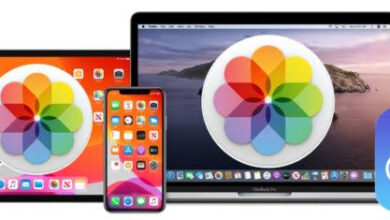From the language of the machine to the simulation of the human nervous system…. Six generations explain the development of the computer through time
computer generations

The concept of generation in the computer world
Table of Contents
This term is used to describe specific types of computers that are similar in all respects to physical equipment and software and produced during a specified period.
Computers belonging to the same generation must have the following characteristics:
the size
Storage capacity
Speed in executing and accessing operations
The first generation “1946-1959”
Vacuum tubes were used in their manufacture
big size
Slow performance and speed
Limited storage capacity
Programming in machine language
An example of this generation is the ENIAC computer, which appeared in 1946 AD

The second generation (1959-1965)
Transistors were used in their manufacture, which were small in size compared to diodes
It is smaller than the first generation computers
Less consumption of electrical energy
It is faster than the first generation computers
Programmed in assembly language
It has a larger storage capacity than the first generation computers
Examples of this generation are: NCR – 304 – IBM – 1401.

The third generation “1965-1971”
Integrated circuits that have advantages over transistors were used in its manufacture, including “small size – cheap price – light weight.”
Small in size compared to the sizes of previous generations
The operating systems used in them have evolved
It was programmed in high-end languages such as “Pascal Language – FORTRAN Language”.
More storage capacity than previous generations
Examples of computers of this generation are: IBM – 360 – IBM – 370 – NCR – 8000

The fourth generation “1971 – until the early nineties”
Integrated circuits were used in its manufacture
I only started using one processor
Its size is very small compared to the sizes of the generations before it
Its speed in executing operations reached tens of millions of operations per second
The main memory is divided into RAM and ROM

The fifth generation “from the beginning of the nineties”
ULSI integrated circuits were used.
Use optical disks
Use more than one CPU
The emergence of highly developed languages such as simulation languages called artificial intelligence
Evolution in the field of networks
It has multimedia technologies

The sixth generation “We live it now”
Fast data processing, with a data processing speed of 250 trillion operations per second
It’s very small
It has a very high storage capacity
It responds to written and graphic inputs and responds to cues and eye fingerprints
It mimics the human nervous system
More in the Computer Software and Hardware section







You must be logged in to post a comment.